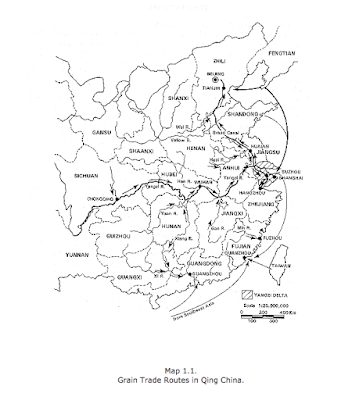Worthwhile Canadian Initiative
High Wages encourage Innovation?
High wages increase the benefits of an innovation that increases labour productivity. The higher the wage, the bigger the benefits of saving an hour of labour to produce the same quantity of goods. But if that innovation itself requires labour to think up the new idea, test it, and implement it, then high wages increase the costs of innovation too. If benefits and costs increase by the same percentage, high wages will have zero effect on the number of innovations that pass the expected benefits > expected costs hurdle, and so zero effect on the number of innovations that would be implemented.
Think of a simple economy where land and labour produce food. At the aggregate level, what matters is whether innovation itself is more or less labour-intensive than the economy as a whole (or those sectors of the economy to which innovation might be applied). Think of an experimental trying out a new variety of wheat using the same labour/land ratio as the economy uses for existing varieties of wheat. The cost of the experiment is the opportunity cost of the existing wheat that could have been grown on the experimental plot of land using the experimental labour. The expected benefit of the experiment is the increased yield if the new variety is a success. The relative scarcity of labour to land, and the relative wage/rent ratio, has zero effect on the expected net benefits of doing the experiment. What does matter is the real rate of interest (the nominal rate minus the expected inflation rate on wheat). Because the costs of the experiment come this year, but the expected benefits of the experiment come in many future years. It is low interest rates, and not high wages, that should encourage innovation. Innovation is an investment.
Sure, innovators are looking at the expected benefits of innovation, and don't know the actual benefits. So it is always possible that labour-saving innovations will have a higher success rate than the innovators expected, and land-saving innovations will have a lower success rate than the innovators expected. If so, higher wages (and lower land rents) may cause innovators to start looking for gold in the exact place where the gold happens to be hiding. Just by luck. But it could easily have been the other way around.
Suppose that innovation, by its very nature, is a very labour-intensive activity. That sounds plausible to me. It takes a lot of labour, and very little land, to do the thinking, and measuring, and recording, and whatever, to find a new variety of wheat that works better than existing varieties. In that case, high wages would increase the costs of innovation by a greater percentage than they would increase the benefits of innovation. So for the marginal innovation, where the Expected Net Present Value was just barely positive, would become negative if wages increased. So fewer innovations would pass the E[NPV] > 0 hurdle if wages rose. If innovation itself is very labour-intensive, high wages discourage innovation.
You want to talk about skilled labour vs unskilled labour? Sure. If innovation requires skilled labour and saves unskilled labour, then a fall in the ratio of skilled to unskilled wages (a rise in the ratio of unskilled to skilled wages) will encourage innovation. But talk about that ratio; don't talk about just "wages".
And don't get me started on "capital"-saving innovation, because "capital" is the time-structure of production. Whenever you start a production process that has present costs and future benefits, you have capital. And the innovation itself is a capital project. And the benefits of innovation will probably outlast any production process it modifies. So a fall in the rate of interest will promote all innovation, including innovation that is purely "capital-saving". And if the real interest rate is negative, so it is profitable to store wheat even if some wheat does get lost in storage, then innovation that lengthens the production process (is the reverse of "capital-saving") is a good innovation. It means you can store wheat for longer before it rots.
I know little about economic history, and even less about innovation. But something about this "high wages encourage innovation" meme doesn't sound right to me.
[Update: Take the simplest case: an innovation costs C units of labour to implement, and benefits by saving B units of labour per year forever. No other costs or benefits. The wage is W, and interest rate is r. The Net Present Value of implementing is
NPV = WB/r - WC = W(B/r - C)
You don't need to know W to tell whether NPV > 0. All that matters is whether B/r > C.
Line up all the possible innovations, from the highest to the lowest NPV (NPV on the Y axis). The NPV curve slopes down, and crosses the X axis, because some projects have negative NPV. We implement if NPV > 0.
An increase in W does not shift the NPV curve up. It causes the NPV curve to swivel clockwise, around the point where it crosses the X axis. It has no effect on the percentage of projects that are profitable. A fall in r is what shifts the NPV curve up.]
Harpers Ferry, WV















